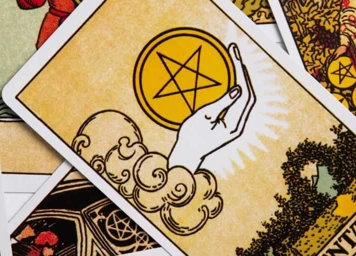The world of tarot reading is a mystical and enigmatic realm that has fascinated people for centuries. While the tarot deck serves as a powerful tool for divination and self-reflection, the true magic lies in the interpreter’s intuition. The Role of Intuition in Tarot Interpretation explores how tapping into our inner guidance and trusting our instincts can unlock the deeper meanings and messages within the cards. Join us on a journey where we unravel the significance of intuition in tarot interpretation and discover ways to enhance your readings with this innate gift.
Contents
- What is Tarot Reading
- The Significance of Intuition in Tarot Interpretation
- Developing Your Intuition
- Intuition versus Traditional Tarot Meanings
- Enhancing Your Tarot Readings with Intuition
- Conclusion
-
Frequently Asked Questions
- 1. Can anyone learn to read tarot cards?
- 2. Do tarot cards have a specific meaning?
- 3. How do tarot cards work?
- 4. Can tarot predict the future?
- 5. How can I connect with my tarot deck?
- 6. Is intuition more important than memorizing tarot card meanings?
- 7. Should I always trust my intuition when reading tarot cards?
- 8. Can tarot readings help with decision-making?
- 9. Can I use tarot cards to gain insight into my personal growth?
- 10. Can I use multiple tarot decks for readings?
- References
What is Tarot Reading
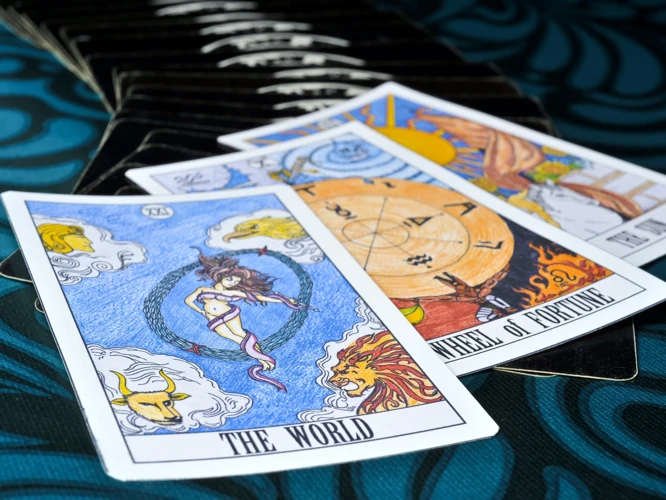
Tarot reading is an ancient practice rooted in divination and spiritual exploration. It involves the use of a special deck of tarot cards, typically consisting of 78 cards with unique images and symbols. These cards are shuffled and laid out in various spreads, each representing different aspects of life and consciousness. The reader then interprets the cards based on their individual meanings and the unique connections that arise during the reading. Tarot readings can provide valuable insights, guidance, and clarity on situations, emotions, and decisions. It is not a fortune-telling tool, but rather a tool for self-reflection and exploration. The tarot deck acts as a mirror, reflecting the subconscious mind and allowing individuals to gain a deeper understanding of themselves and their life circumstances. Tarot reading is a powerful tool that can help individuals gain wisdom, insight, and guidance to navigate their life’s journey. To deepen your understanding of tarot and develop your intuition further, you may explore resources such as tarot journaling for personal growth, deepening intuition through daily tarot practice, and tips for connecting with your inner wisdom during intuitive tarot readings.
The Significance of Intuition in Tarot Interpretation
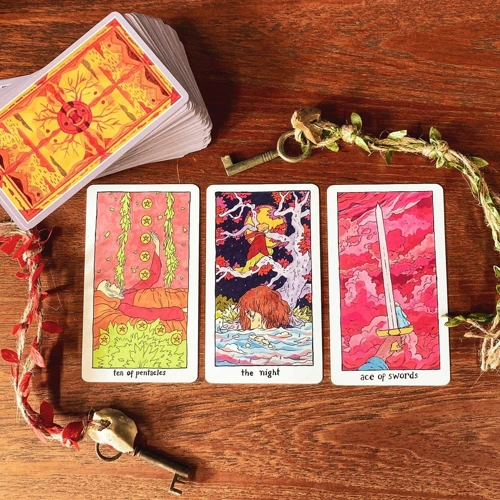
Intuition plays a profound role in tarot interpretation, allowing readers to delve beyond the surface meanings of the cards and tap into the deep wisdom that lies within. lies in its ability to connect with the energy of the cards, the subconscious mind, and the universal consciousness. Here are three key aspects where intuition shines in tarot interpretation:
- Connecting with the Tarot Deck: Intuition allows the reader to establish a personal connection with the tarot deck, creating a channel of communication between themselves and the cards. Through intuition, the reader can attune to the unique energy and symbolism of each card, enabling a more profound interpretation based on the intuitive messages received.
- Trusting Your Inner Voice: Intuition guides tarot readers to trust their inner voice and instincts when interpreting the cards. It encourages them to rely on their intuitive hunches, gut feelings, and subtle sensations, rather than solely relying on the traditional meanings of the cards. Intuition allows for a personalized and nuanced reading, tailored to the specific needs and circumstances of the querent.
- Sensing Symbolism and Energy: Intuition helps tarot readers sense the deeper symbolism and energy present in the cards. It allows them to go beyond the literal representation and explore the underlying layers of meaning within each card. Intuition helps readers uncover the subtle nuances, messages, and insights that may be hidden beneath the surface, providing a more holistic and profound interpretation.
In essence, intuition acts as a guiding light in tarot interpretation, allowing readers to access their innate wisdom and merge it with the symbolism of the cards. It invites a deeper connection to our intuition, enhances our understanding of the messages conveyed by the tarot, and ultimately empowers both the reader and the querent on their spiritual journey.
1. Connecting with the Tarot Deck
When it comes to tarot interpretation, one of the essential steps is connecting with the tarot deck. This connection establishes a bond between the reader and the cards, allowing for a more intuitive and insightful reading. Here are a few ways to strengthen that connection:
- Clearing the deck: Before each reading, take a moment to clear the energy of the cards. You can do this by shuffling them, blowing on them, or tapping them gently. This helps to release any stagnant or lingering energies from previous readings.
- Establishing a ritual: Create a personal ritual to prepare yourself and the deck for each reading. This could involve lighting candles, setting intentions, or saying a prayer. The ritual acts as a signal to your subconscious mind that it’s time to enter a focused and receptive state.
- Handling the cards: Hold the cards in your hands and allow your energy to merge with theirs. Some readers prefer to fan out the deck and run their fingers over the cards, while others prefer to hold the entire deck in their hands. Find a method that feels comfortable and natural to you.
- Meditation and visualization: Take a few moments to close your eyes, breathe deeply, and visualize a golden or white light surrounding the deck. Imagine this light infusing the cards with positive and loving energy. This practice helps to establish a psychic connection with the deck.
- Learning the symbolism: Familiarize yourself with the symbolism present in the tarot deck. Study the images, colors, and numbers on each card. Understand the traditional meanings associated with the cards, but also allow your intuition to guide you in interpreting their messages.
By following these steps and taking the time to connect with the tarot deck, you open yourself up to a deeper level of intuitive insight during your readings. Remember that the more you work with the cards, the stronger this connection will become.
2. Trusting Your Inner Voice
Trusting your inner voice is a crucial aspect of tarot interpretation. When conducting a reading, it’s important to listen to your intuition and trust the messages that come from within. Here are some tips to help you trust your inner voice during a tarot reading:
1. Quiet the Mind: Before starting a reading, take a few moments to quiet your mind through meditation or deep breathing. This helps to create a calm and receptive state, allowing your inner voice to emerge clearly.
2. Pay Attention to Physical Sensations: Notice any physical sensations or cues that arise when you look at a tarot card. Pay attention to your gut feelings, tingling sensations, or even a change in body temperature. These physical sensations can be subtle indicators of what your intuition is trying to reveal.
3. Observe Your Initial Reactions: When you first glimpse a card, pay close attention to your immediate thoughts, emotions, and impressions. These initial reactions are often insightful and can provide valuable clues on how to interpret the card’s meaning in relation to the question or situation.
4. Release Self-Doubt: Trusting your inner voice requires letting go of self-doubt and judgment. Remember that you are tapping into a deeper wisdom that goes beyond logic and rationality. Embrace the uncertainty and allow yourself to flow with the intuitive guidance that arises.
5. Practice and Reflect: The more you practice working with your intuition during tarot readings, the more you develop a sense of trust in your inner voice. After each reading, take time to reflect on the accuracy of your intuitive insights. This reflection helps to build confidence and strengthen your connection to your intuition.
Trusting your inner voice during a tarot reading allows you to tap into the profound wisdom and guidance that the cards hold. Regardless of the traditional interpretations, your intuition adds a personal and unique perspective to each reading. Embrace this intuitive aspect of tarot interpretation, and let your inner voice guide you towards deeper insights and understanding.
3. Sensing Symbolism and Energy
When it comes to tarot interpretation, sensing symbolism and energy is a crucial aspect that relies heavily on intuition. Each tarot card is rich in symbolism, from the imagery and colors to the numbers and patterns. Sensing symbolism requires the reader to go beyond the literal meanings of the cards and delve into the layers of metaphorical significance. This involves observing the details, noticing recurring themes, and making connections between the symbols present in different cards. In addition to symbolism, the energy of each card plays a vital role in interpretation. Energy refers to the emotions, vibrations, and aura that emanate from the cards. It is the intuitive ability to pick up on the subtle energies and atmospheres conveyed through the images and concepts depicted in the cards. By tapping into their intuition, readers can sense the energy of each card and understand the overall dynamic and message of the reading. Trusting your instincts and allowing yourself to tune in to the symbolism and energy of the cards can lead to profound insights and profound readings.
Developing Your Intuition
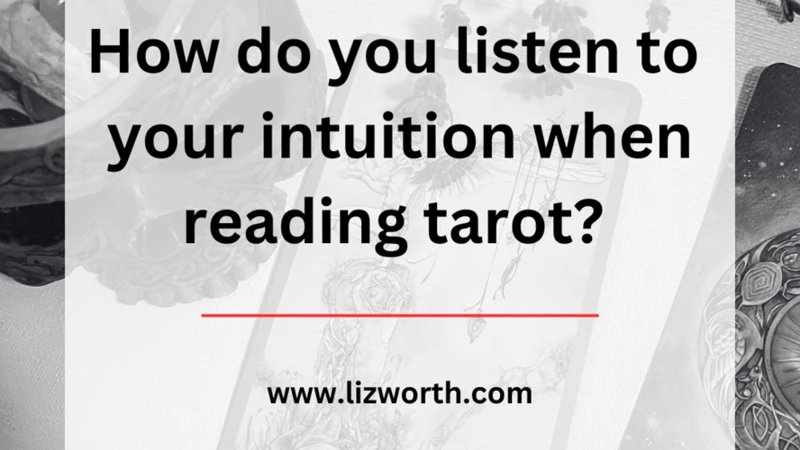
Developing your intuition is essential for enhancing your tarot reading abilities. Intuition is the innate ability to perceive and understand information without relying solely on logical reasoning. It is that inner voice, that gut feeling, that guides us towards deeper insights and hidden truths. There are several practices you can incorporate into your daily life to cultivate and strengthen your intuition. Meditation and contemplation allow you to quiet the mind, creating space for intuitive thoughts and impressions to arise. Journaling and reflection help you become more aware of your inner thoughts and feelings, enabling you to recognize patterns and connect with your intuition on a deeper level. Building a relationship with your tarot cards is also important. Spend time studying the imagery, symbolism, and meanings of each card, and practice pulling cards daily to tune into their energy and messages. By developing your intuition, you will enhance your ability to interpret the tarot cards more accurately and intuitively.
1. Meditation and Contemplation
Meditation and contemplation play a crucial role in developing intuition for tarot interpretation. By quieting the mind and creating a space for inner reflection, we can access our deeper wisdom and intuition. During meditation, we can set the intention to receive insights and guidance that are relevant to the tarot reading. This practice helps us cultivate a state of calm and receptivity, allowing us to connect with our intuition on a deeper level. Taking time to contemplate the symbols, images, and messages of the tarot cards during meditation allows us to go beyond the surface level meanings and tap into the intuitive messages they hold. Through meditation and contemplation, we can develop a strong sense of intuition that guides us in understanding the profound symbolism and hidden meanings within the tarot cards. It is through this introspective practice that we gain the ability to interpret the cards in a way that resonates with our intuition and provides meaningful guidance to ourselves and others.
2. Journaling and Reflection
Journaling and reflection are powerful practices that can enhance your intuition and deepen your understanding of tarot cards. When it comes to tarot reading, keeping a journal allows you to document your readings, record your interpretations, and reflect on the connections you’ve made. This process helps you develop a stronger connection with the cards and your intuition. Journaling provides a space for self-reflection, allowing you to explore your thoughts, feelings, and insights that arise during readings. It also helps you identify patterns, recurring themes, and symbolism within the cards. When journaling, consider writing down your initial impressions of each card, the emotions they evoke, and any intuitive insights or messages you receive. Additionally, reflect on your past readings and revisit them over time to see how your interpretations have evolved. By regularly engaging in journaling and reflection, you can deepen your understanding of the tarot, strengthen your intuition, and cultivate a more meaningful and personal connection with the cards.
3. Building a Relationship with Your Cards
Building a relationship with your tarot cards is a crucial step in developing your intuition and enhancing your tarot readings. involves creating a bond with the deck that allows you to tap into its energy and symbolism more effectively. One way to establish this connection is by spending time with your cards on a regular basis. Take the time to handle them, shuffle them, and study each card’s imagery and symbolism. This familiarity will deepen your understanding of the cards and strengthen your intuitive connection with them.
Another way to build a relationship with your cards is through personal rituals. You can create a sacred space for your tarot practice, such as a dedicated tarot altar, where you can keep your deck and perform rituals before each reading. This can involve lighting candles, setting intentions, or simply taking a moment to center yourself and connect with the energy of the cards.
Additionally, incorporating your cards into your daily life can strengthen your bond with them. Carry a card with you throughout the day and reflect on its meaning and how it relates to your experiences. This constant interaction with the cards will train your intuition to recognize their messages more readily.
It’s also important to trust your intuition when working with the tarot deck. Allow yourself to go beyond the traditional interpretations of the cards and listen to the wisdom that arises from within. Pay attention to your gut feelings, intuitive flashes, and the emotions that arise when you look at the cards. Trust that your intuitive insights are valid and valuable.
By building a relationship with your tarot cards, you create a sacred bond that allows for a deeper and more intuitive connection during readings. Your cards become an extension of yourself, and the messages they convey become clearer and more meaningful. Through this connection, you will enhance your ability to interpret the tarot’s symbolism and access the profound insights that can guide and empower both yourself and others.
Intuition versus Traditional Tarot Meanings
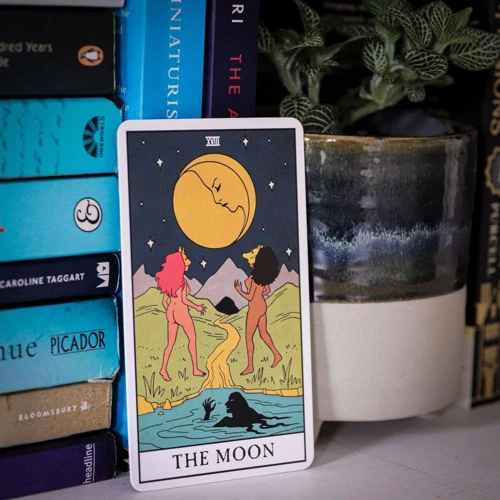
When it comes to tarot interpretation, there is a dynamic interplay between intuition and traditional tarot meanings. While traditional tarot meanings provide a solid foundation and framework for interpreting the cards, intuition adds a layer of personal insight and nuance to the reading. explores the balance between these two elements and how they can work together harmoniously.
1. Intuition:
– Intuition allows the reader to tap into their subconscious knowledge and inner guidance. It is the ability to sense subtle energies and connections between the cards.
– Intuition enables the reader to go beyond the surface-level meanings of the cards and uncover deeper, more personalized interpretations.
– Intuition brings a sense of flow, creativity, and spontaneity to the reading, allowing for fresh perspectives and unexpected insights.
2. Traditional Tarot Meanings:
– Traditional tarot meanings provide a structured system of interpretation and symbolism for each card in the deck.
– These meanings have been passed down through generations and are based on the collective knowledge and wisdom associated with the tarot.
– Traditional tarot meanings serve as a guidepost, offering a foundation for understanding the cards and their significance within different contexts.
Intuition and traditional tarot meanings are not in opposition; instead, they complement each other. The reader can start with the traditional meanings as a starting point and then allow their intuition to guide them in tailoring the interpretation to the specific situation or individual. It is the delicate dance between these two elements that creates a unique and powerful tarot reading experience.
Enhancing Your Tarot Readings with Intuition
Enhancing Your Tarot Readings with Intuition allows for a deep and personalized experience that goes beyond the traditional meanings of the cards. By starting with an open mind and allowing your intuition to guide you, you can unlock profound insights and connections during your readings. Starting with an open mind means approaching each reading without preconceived notions, judgments, or expectations. This creates space for new interpretations and allows your intuition to flow freely. Encouraging client participation is another way to enhance tarot readings with intuition. By actively involving clients in the reading process, such as inviting them to share their thoughts and feelings or asking open-ended questions, you create a collaborative and intuitive atmosphere that deepens the reading’s significance. Lastly, letting the cards guide your intuition is vital. While the traditional meanings of the cards serve as a foundation, it’s essential to allow your intuition to draw connections, notice symbols, and feel the energy of the cards. This intuitive dance between the cards and your inner guidance can lead to profound and transformative readings.
1. Starting with an Open Mind
When it comes to enhancing your tarot readings with intuition, starting with an open mind is crucial. This means approaching each reading without preconceived notions or biases, allowing yourself to be receptive to the messages and insights that come through. By setting aside any fixed expectations, you create space for your intuition to flow freely and guide you in interpreting the cards. Here are some ways to cultivate an open mind during tarot readings:
- Release Expectations: Let go of any specific outcomes or desires you may have for the reading. Instead, approach it with a sense of curiosity and openness to what the cards have to reveal.
- Clear Your Mind: Take a few deep breaths, center yourself, and let go of any distracting thoughts or worries. Clearing your mind creates a blank canvas for intuitive insights to emerge.
- Set Aside Bias: Be aware of any personal biases or preconceived ideas you may have about the subject of the reading or the cards themselves. Approach the reading with neutrality and non-judgment.
- Be Present: Focus on the present moment during the reading. Avoid getting caught up in past experiences or future worries. Stay fully engaged with the cards and their meanings as they unfold before you.
- Embrace Flexibility: Be willing to adapt and adjust your interpretations as new information comes to light. The reading may take unexpected turns, and being flexible allows you to follow the intuitive guidance that arises.
By starting with an open mind, you create a receptive space for your intuition to collaborate with the cards, leading to deeper and more insightful interpretations. This approach allows for a more authentic and intuitive connection with the querent and promotes a transformative and empowering tarot reading experience.
2. Encouraging Client Participation
Encouraging client participation is a crucial aspect of conducting a tarot reading. It not only empowers the client but also enhances the overall experience and accuracy of the interpretation. When clients actively participate in the reading, they become co-creators of their own destiny and gain a sense of ownership over the insights gained. One way to encourage participation is by asking open-ended questions that prompt clients to reflect on their own experiences and emotions. By doing so, clients can provide additional context to the cards and offer personal insights that may not be visible to the reader alone. Another way to foster participation is by creating a non-judgmental and safe space where clients feel comfortable sharing their thoughts, feelings, and concerns. This can be achieved through active listening, empathy, and a genuine curiosity about the client’s perspective. When clients feel heard and understood, they are more likely to open up and actively engage in the reading process. Lastly, it’s important to remember that tarot readings are not about imposing the reader’s beliefs or agenda onto the client, but rather facilitating a conversation and exploration of possibilities. By encouraging client participation, the reading becomes a collaborative experience, allowing for a deeper understanding and meaning to emerge.
3. Letting the Cards Guide Your Intuition
When it comes to tarot readings, letting the cards guide your intuition is a crucial aspect of interpretation. Each card in the tarot deck holds its own unique energy and symbolism, and by paying attention to these elements, you can tap into your intuitive abilities and receive deeper insights. Here are some ways to let the cards guide your intuition:
1. Observe the Visual Cues: Take the time to closely observe the imagery on each card. Notice the colors, symbols, and figures present. Allow your intuition to pick up on any specific details that stand out to you. These visual cues often hold valuable messages that can guide your interpretation.
2. Pay Attention to Card Placement: The position of the card within the spread can also provide insights. Consider how the card’s meaning relates to its placement. For example, a card in the past position may indicate past influences or experiences, while a card in the future position could suggest upcoming events or potential outcomes.
3. Trust Your Gut: Sometimes, your initial instinct or gut feeling about a card’s meaning is the most accurate. Your intuition may send subtle signals or feelings that can guide your interpretation. Trust these intuitive nudges and allow them to shape your understanding of the cards.
4. See the Connections: Look for connections and patterns between the cards. Pay attention to the relationships and interactions between them. Intuitively, you may sense how certain cards complement or contrast each other, shedding light on the overall message of the reading.
Remember, the cards are tools that trigger your intuition and provide a framework for interpretation. While it is important to have knowledge of traditional tarot meanings, letting your intuition take the lead can offer personalized and insightful readings. By allowing the cards to guide your intuition, you can unlock a deeper level of understanding and provide more meaningful readings for yourself and others.
Conclusion
In conclusion, the role of intuition in tarot interpretation is of paramount importance. It allows the reader to go beyond the traditional meanings of the cards and tap into a deeper level of understanding and insight. Through connecting with the tarot deck, trusting our inner voice, and sensing symbolism and energy, we can unlock the true power of the cards. Developing our intuition through practices like meditation, journaling, and building a relationship with our cards can further enhance our tarot readings. While traditional tarot meanings have their place, embracing our intuition allows for a more personalized and meaningful interpretation. It is important to approach each reading with an open mind, encourage client participation, and let the cards guide our intuition. By embracing and honing our intuitive abilities, we can elevate our tarot readings to a higher level of accuracy and depth. So, harness the power of your intuition, and embark on a journey of self-discovery and spiritual insight through the captivating world of tarot.
Frequently Asked Questions
1. Can anyone learn to read tarot cards?
Yes, anyone with an interest and willingness to learn can become proficient in reading tarot cards. It requires dedication, practice, and a willingness to trust your intuition.
2. Do tarot cards have a specific meaning?
Tarot cards have general meanings associated with each card, but their interpretation can vary depending on the context, question, and intuition of the reader.
3. How do tarot cards work?
Tarot cards are believed to work by tapping into the subconscious mind and the collective unconscious, allowing the reader to access insights and guidance beyond their conscious awareness.
4. Can tarot predict the future?
Tarot cards are not meant to predict the future with certainty. Instead, they provide insights, guidance, and potential outcomes based on current energies and circumstances.
5. How can I connect with my tarot deck?
You can connect with your tarot deck by spending time with it, meditating with the cards, and developing a personal relationship with each card’s imagery and symbolism.
6. Is intuition more important than memorizing tarot card meanings?
Both intuition and memorizing tarot card meanings play a valuable role in tarot interpretation. While it’s helpful to have a foundation of knowledge, intuition allows for a deeper and more personal understanding of the cards.
7. Should I always trust my intuition when reading tarot cards?
Trusting your intuition is an essential aspect of tarot reading. However, it’s also important to exercise discernment and consider the broader context of the reading to ensure accurate interpretations.
8. Can tarot readings help with decision-making?
Yes, tarot readings can offer insights, perspectives, and guidance that can aid in the decision-making process. They can provide clarity and help individuals consider various factors before making choices.
9. Can I use tarot cards to gain insight into my personal growth?
Absolutely! Tarot cards can serve as a powerful tool for self-reflection and personal growth. They can help you understand your strengths, areas for growth, and guide you on your personal development journey.
10. Can I use multiple tarot decks for readings?
Yes, you can use multiple tarot decks for readings. Each deck may have a unique energy and symbolism, offering different perspectives and insights that can deepen your interpretations.
